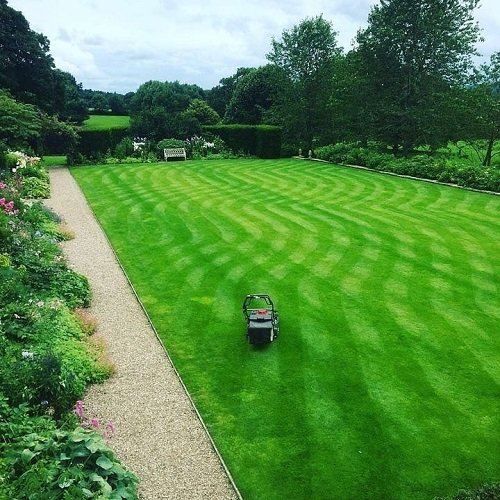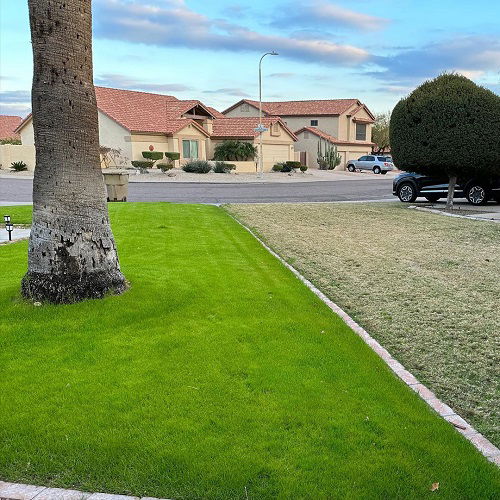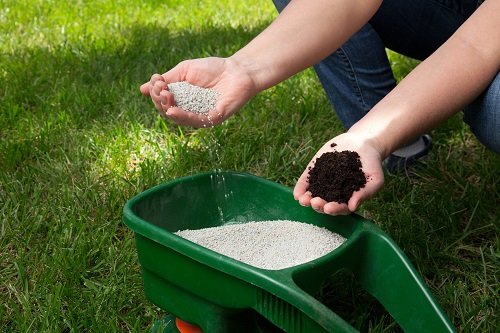Learn How to Grow and Care for Bermuda Grass with these expert tips and have a lush lawn in your home for the entire year!

Bermuda Grass is a popular warm-season garden specimen known for its durability and resilience. In this guide, we will provide you with essential tips and tricks on how to grow and maintain a lush Bermuda Grass Lawn.
USDA Zones:
Check out the best grass-like plants here
Bermuda Grass Information
Bermudagrass is a warm-season perennial grass originally from tropical and subtropical regions worldwide. It was already prevalent in southern states by 1807 and grew most actively from late spring through the hot summer months.
It is not as tolerant of cold temperatures as Zoysia grass, which is warm-season grass, or cool-season grasses like turf-type tall fescue. However, it remains a popular choice for lawns in southern states, including areas from the Atlantic to California.
Bermuda grass thrives in areas with plenty of direct sunlight and well-draining soil. It has exceptional tolerance to heat, salt, and humidity and is also drought-resistant. Its roots usually grow within 6 inches of the surface but can reach depths of up to 6 feet or more, making it more resilient to environmental stress than other warm-season grasses such as Centipede grass.
Check How to Grow Lemongrass from Seed here
When to Plant Bermuda Grass?

Bermuda grass is a warm-season seed, so the ideal time for planting is late spring or early summer after the last frost.
It’s recommended to wait for at least two months after the last frost before planting. However, in the southern regions, planting in March and April may be possible if the temperature consistently stays above 70°F for several weeks, allowing the ground to warm up to an internal temperature of 80°F.
Check How to Grow Rye Grass here
Bermuda Grass Propagation from Seeds
- To prevent competition from existing grass and weeds in your yard, use a tiller to roll over the lawn and remove them. This will create a suitable environment for planting Bermuda grass.
- For optimal results, it is recommended to begin with a new piece of land. After tilling the soil, use a rake to remove dead grass and leaves from the surface, creating a plot of land free from new plant growth.
- Before planting Bermuda grass, it’s crucial to test the soil in your yard to ensure it’s suitable for growth. Bermuda grass thrives in soil with a pH range of 5.6 to 7.0. To determine the pH level of your soil, you need to conduct a soil test.
- Evenly spread Bermuda grass seeds by hand on the soil surface. The recommended seeding rate is 1 to 2 pounds (453.59 to 907.18 g) per 1000 square feet (304.8 square meters). Walk over the entire area while distributing the seeds evenly to ensure uniform coverage.
- Cover the seeds lightly with a layer of soil and water the yard. Keep in mind that Bermuda grass is not drought-tolerant, and it needs plenty of water to germinate seeds.
- It’s essential to maintain consistent soil moisture during the first three weeks after planting Bermuda grass seeds. Gradually decrease watering as the turf matures to encourage deeper root growth.
See What to Do With Grass Clippings here
Requirements for Growing Bermuda Grass

Sunlight
Bermuda grass requires full exposure to sunlight, as it’s not very shade-tolerant. Planting it in areas with less than 70% full sun may result in thinning of the grass stand. Make sure it gets at least 5-6 hours of full sun daily.
Soil
Bermuda grass grows best in sandy soils with excellent drainage. The ideal soil pH range for a healthy lawn is 6.0 to 7.5.
The growing medium should have a good amount of organic matter, such as compost or manure, to help retain moisture and provide nutrients.
Water
Bermuda grass should be watered deeply and infrequently. The best time to water is early in the morning, as this allows time for the water to soak in before the heat of the day sets in.
Watering Bermuda grass too often can cause it to become waterlogged and lead to disease and weed growth. A good rule of thumb is to provide 1-1.5 inches of water per week.
Read our Article on How to Make Liquid Grass Clipping Tea Fertilizer here
Bermuda Grass Care
Fertilizer
The best time to fertilize Bermuda grass is during the spring and summer when the grass is actively growing. Use a 3-1-2 (N-P-K) blend.
Apply the fertilizer at the rate of 1 pound of nitrogen per 1000 square feet of grass every six to eight weeks. Water the lawn thoroughly after each application.
Insect Control
During the summer months, various insect pests may attack Bermuda grass, including mole crickets, grubs, ground pearls, Bermuda grass mites, Bermuda grass scales, and nematodes, causing significant damage.
Applying an insecticide is the most effective control, even if damage has not yet occurred.
Disease Control
During the growing season, bermudagrass may be susceptible to various diseases, including large patches, dollar spots, and spring dead spots. Large patches and dollar spots are fungal diseases that thrive in warm, moist conditions.
- It is crucial to practice proper watering techniques and ensure that the soil has adequate drainage to prevent the turf from becoming excessively wet.
- If the lawn remains moist, circular areas may begin to form and gradually increase in size.
- Infected areas caused by dollar spots typically range from 2 to 6 inches in diameter, while large patches can result in affected areas that may grow to several feet in diameter.
- If the turf at the edge of the dying area appears brown and rotten, it is necessary to apply a fungicide treatment to control the disease.
Check Out 14 Beautiful Landscaping Without Grass Ideas
Mowing Bermuda Grass
Mowing is essential for its health and maintenance. It should be mowed at the height of between 1-2 inches (2.5-5 cm). This helps to keep the grass healthy and prevent weeds from taking over.
Mow regularly (at least once a week during the growing season), and be sure to mow when the grass is dry to prevent disease.
Additionally, mow in different directions each time to prevent the grass from matting and compacting. Lastly, use a sharp blade for a clean cut and to prevent damage to the grass.
Things You Can Do With Bermuda Grass

- Create a lawn: Bermuda grass is a great option for creating a lush, green lawn.
- Line driveways and paths: It is a great choice for lining driveways, pathways, and sidewalks.
- Plant a garden: This is a great choice for planting a variety of flowers, vegetables, and herbs.
- Make hay: It is a favorite for making hay, which is a great source of nutrition for livestock.
- Cover golf courses: Bermuda grass is a popular choice for covering golf courses.
- Feed animals: It is a popular choice for feeding livestock.
- Make a putting green: This is an ideal choice for making a putting green.
- Grow in containers: It can be grown in containers and is ideal for small spaces or patios.
- Make a play area: Bermuda grass is a great choice for making a play area for children.
- Plant as ground cover: It is a great choice for planting as ground cover in areas that need some extra protection from weeds.
See 10 Stunning Red Ornamental Grasses here
Is Bermuda Grass Safe for Pets?
Yes, Bermuda grass is generally safe for pets, so you don’t have to worry about your dogs and cats when they play around it in your yard.



